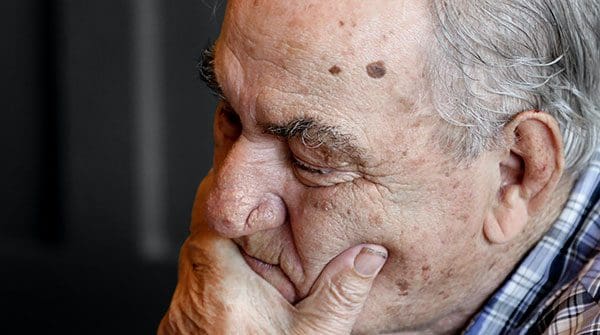 Alzheimer’s is an ailment of the brain that touches almost everyone. Most of us know a friend or family member who suffers from this common and devastating disease.
Alzheimer’s is an ailment of the brain that touches almost everyone. Most of us know a friend or family member who suffers from this common and devastating disease.
Once considered rare, Alzheimer’s is now known to be the leading cause of dementia in the aging population and is one of several disorders that cause loss of brain cells and function.
As many as 10 percent of people over the age of 65 have dementia; that number increases to as many as 35 percent of people over the age of 85. It is a serious problem for an aging population, with major implications on how to provide adequate care for such a huge number of people.
The most common and widely understood symptom of Alzheimer’s is a gradual loss of memory. If a loved one begins to regularly misplace things or forget information, Alzheimer’s is usually one of the first worries to surface among family members.
Memory loss is indeed a hallmark, but there are other important symptoms in this disease. Problems with reasoning and judgment, disorientation, difficulty in learning, loss of language skills and decline in the ability to perform routine tasks are some other common manifestations of Alzheimer’s.
People with Alzheimer’s also experience changes in their personalities as well as behavioural problems such as agitation or anxiety. Psychotic symptoms like delusions and hallucinations can also affect those suffering with this disease.
All of these symptoms work together to make this a particularly upsetting disorder to experience or to witness in a loved one. Taking care of a loved one with Alzheimer’s can be extremely distressful and difficult. Not only must caregivers watch their loved one’s faculties and personality change and deteriorate, but the tasks of keeping the patient safe become increasingly hard to manage as the disease progresses. It is also unpredictable in its rate of progression and can take anywhere from three to 20 years to reach its most severe state.
It is not known exactly what causes Alzheimer’s, but there seem to be both genetic and environmental factors. Family history is a known risk factor and studies show that multiple genes seem to be involved in Alzheimer’s.
Two types of Alzheimer’s have been identified in genetic research, familial and sporadic. Specific genes have been isolated for familial Alzheimer’s and if a person inherits one of these genes, it is highly likely they will develop the disease and will likely develop it before the age of 65.
In some of these families, half of the children of the affected patient will develop the dementia. The mutant gene is dominant over the normal gene inherited from the unaffected parent. However, this type of Alzheimer’s is fairly rare and only accounts for 5 percent of cases.
Sporadic Alzheimer’s has no known pattern of inheritance, but also seems to have a genetic component to it and several genes that may be involved have been isolated. More research still needs to be done to fully determine the way these genes contribute to the problem.
In both types of the disease, something goes wrong with the way the brain processes proteins. The result is that the brain becomes littered with toxic pieces of protein.
Sometimes these proteins occur in clusters inside cells, which are called neurofibrillary tangles. The density of these tangles in the brain is a good indicator of the severity of the dementia.
A second kind of protein deposit in Alzheimer’s is the amyloid plaque. These deposits develop long before the tangles do and occur in the spaces between cells.
Usually, the neurons surrounding the plaques appear swollen and deformed and the plaques are surrounded by cells called microglia, which are part of the brain’s immune system. Researchers think these cells might be trying to either remove the plaques or the damaged neurons around them.
Researchers are still working to fully understand the exact causes of these plaques and tangles and feel that results will lead to a much better understanding of the disease.
Recent evidence is also linking high cholesterol and high blood pressure to an increased risk for Alzheimer’s.
Although there is no cure for Alzheimer’s, there are some drug treatments that may improve or stabilize symptoms as well as care strategies and activities that may minimize or prevent behavioural problems.
There are also some protective measures that may help to prevent the onset of Alzheimer’s. Physical and mental exercises are among the most consistently helpful activities.
This disease is a very good model of how our growing understanding of genetics and molecular biology can, together, suggest how effective treatments might be designed. We will explore some of those mechanisms in a future article.
If you or a loved one is experiencing symptoms you feel might represent the onset of Alzheimer’s, it is important to visit your family doctor or a memory clinic if there is one available to you. While you won’t be able to stop the disease, it is possible to improve quality of life.
Dr. Latimer is president of Okanagan Clinical Trials and a Kelowna psychiatrist.
The views, opinions and positions expressed by columnists and contributors are the author’s alone. They do not inherently or expressly reflect the views, opinions and/or positions of our publication.


